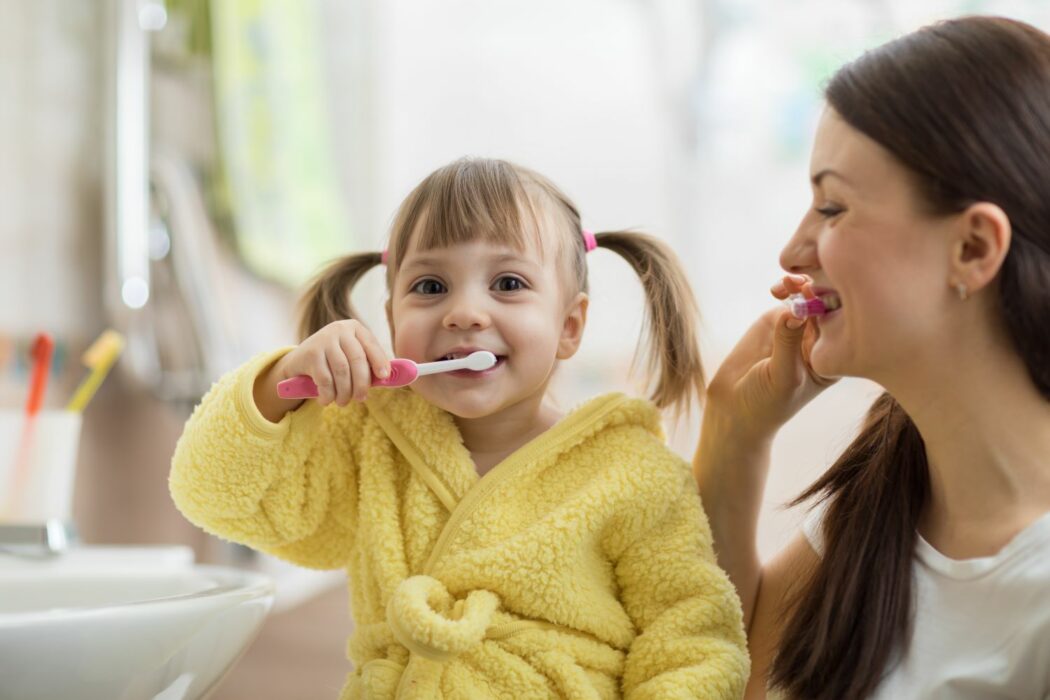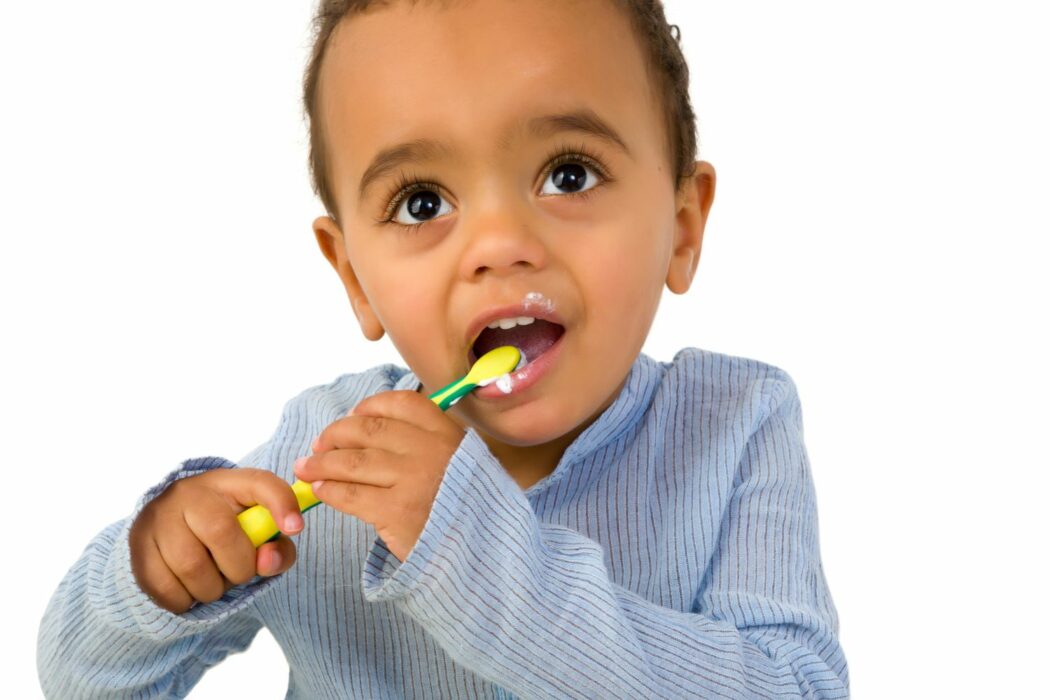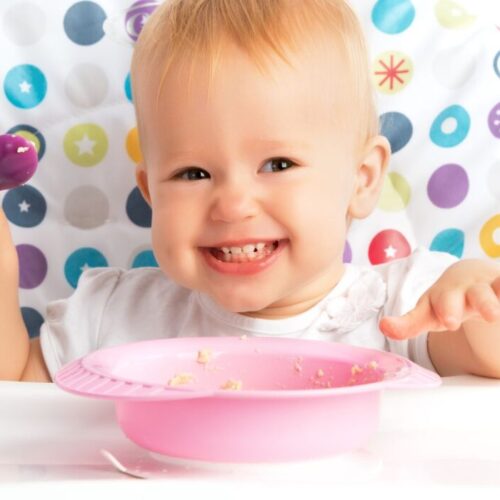Dental care for toddlers
Good dental hygiene is non-negotiable! Everyone needs to take care of their teeth and we owe it to our kids to make sure that we teach them the right way.
TOOTH TRUTH
Baby teeth
Your little one’s baby teeth can appear in no particular order. Generally speaking, the incisors (front teeth) will show first and the rest will follow. Babies will grow 20 teeth in total and they will usually all have arrived by their third birthday.

Dental hygiene
Ensuring that your child has good dental hygiene is a key part of looking after their health. Dentists recommend that you help your child to brush their teeth at least twice a day. Once in the morning and the second time just before bed. Use a small amount of toothpaste on a gentle child-specific toothbrush.
As they grow and learn, your child will naturally want to brush their teeth by themselves. You can phase them into this by initially letting them clean their teeth and then you can help out at the end by getting any spots you suspect they may have missed. They get to be involved and you know that they’re teeth are properly clean. Every child is different but most will need some form of assistance until roughly seven years of age.

Even if you feel they are doing a good enough job, it’s worth supervising from time to time to ensure that they’re brushing their teeth thoroughly. Once you feel they’re able, consider helping them get into the habit of using mouthwash and flossing and they’ll have a complete dental hygiene routine.
Here’s a 5-step guide to helping your child brush their teeth:
- Position yourself behind your child, with the two of you facing a mirror. This means they can see you and you can see their mouth
- Gently hold your child’s face and maybe tilt their head backwards slightly so it’s resting against you. This will make them feel safe and comfortable which is particularly important in the early stages of teeth brushing – it can be a scary process for some children!
- With a small amount of toothpaste, slowly move the toothbrush in small circles across your little one’s teeth and gums. Be sure to brush all three faces of the teeth – the front, the back and the biting surface, and don’t forget to brush their tongue
- Once they spit out the toothpaste, check if there are any little toothpaste marks around their mouth and wipe them away
- Rinse the toothbrush and store it with the head facing upwards so that it can dry thoroughly
If your child is nervous around teeth-brushing, try to make it as fun an experience as possible. You can sing a tune, make jokes or do anything that will distract them from any discomfort while you get the job done.
PICKING THE RIGHT TOOTHBRUSH
Be sure to select a toothbrush that’s suitable for your child’s age. Younger children need smaller brushes with softer bristles. These will often come in lovely designs with your child’s favourite cartoon character on them. Perfect for taking the fear out of teeth-brushing!
Don’t forget that toothbrushes are only effective for around 3 months so replace them when they’re worn out. It’s always worth buying toothbrushes in pairs so you’ll have a spare new toothbrush just in case!
THE DREADED DENTIST
It’s recommended to bring your child for their initial visit to the dentist with the arrival of their first tooth, when they’re around 6 months old. Going to the dentist can be a frightening prospect for any child. It’s important to find a good dentist for your little one when they’re young and future visits will be free of stress.
Using the same dentist will help you to build up a clear picture of your child’s dental health too. Some children will need to hear dental advice from a professional as well as their parents for it to really sink in. As with all health issues, prevention is the best course of action so adopt this approach by booking your child in for regular dental check-ups.
NUTRITION AND DENTAL HEALTH
We all know that our children need a well-balanced diet, taking in all the major food groups. However, there is a link between diet and tooth decay. Carbohydrates and sugar tend to be the main culprits. Whether or not they cause any damage depends on how long they’re left on the teeth.
5 tips for avoiding tooth decay:
- If possible, stay away from sticky foods that could linger in your child’s mouth after they’ve finished eating
- Try to limit snacking as much as possible. This will give plenty of time between eating for your child’s saliva to remove the food particles
- Encourage your child to rinse their mouth by drinking some water after a meal.
- Avoid sugary snacks and treats as much as you can
- Include foods like green vegetables that have a high calcium content to keep your child’s teeth healthy and strong
Introducing teeth-brushing and healthy nutrition habits will ensure that your child has good dental health. Take the fear out of it all by being by their side and leading by example. You can feel good about yourself when your child looks up at you and smiles with those lovely pearly whites!












Comments